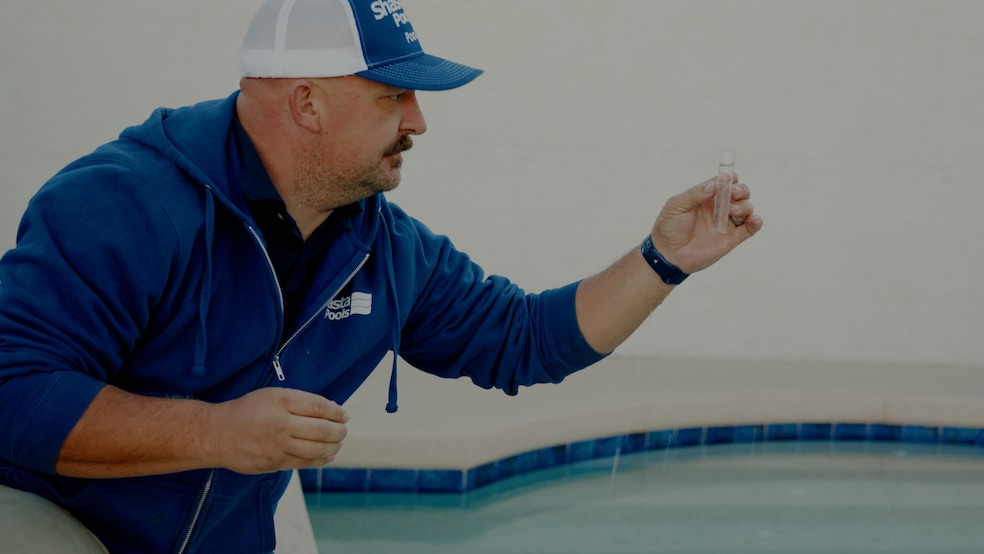For some Americans, Labor Day weekend can signal the end of summer and the time to wind down the pool for the fall and winter months. Arizonans, however, get the chance to enjoy their swimming pool nearly year-round.
That can be a pricey endeavor. After the initial building costs that can run tens of thousands of dollars, ongoing maintenance is required to maximize a pool's lifespan.
Brock Falk, a field manager at Phoenix-based pool builder Shasta Pools, said that maintenance starts by keeping a close eye on the pool's chemicals — chlorine, power of hydrogen, or pH, and alkalinity.
The unrelenting heat in Arizona calls for more regular tests as water evaporates more quickly and pools generally carry a higher pH level, posing risks.
Falk doesn't mind the heat. He told Homes.com that he started working in construction the day he graduated high school and found a hard day's work in the sun rewarding.
"I know Phoenix is hot, but I do better in the sun," Falk said with a laugh. "It's definitely something that can pay well as long as you're putting in the work."
Falk spent over a decade in the pool service industry, learning how to maintain and repair pools before joining Shasta in 2023. He now oversees 12 technicians and works with over 600 customers, nearly all of whom are single-family home clients with their own pools and a handful of apartment community pools.
This interview has been edited for length and clarity.
What's different about caring for a pool in Arizona versus elsewhere in the country?
As hot as we get here in Arizona, your pool experiences much more evaporation. With that alone, you're constantly getting water that is not balanced — it doesn't have chlorine in it. Usually, Arizona has very high pH. You want a 7.4 [pH level] on the pool and your water coming in is just 8.0. You're going to need to add acid often to keep those levels down.
But our biggest thing is the heat and with the warmth, it changes chemicals. You can have a perfectly balanced pool early in the morning and come late afternoon, that cold water heats up to 90, 95 degrees. When we get into the spring and fall times, we can see a 50-degree night and a 90-degree day. We've got a 40-degree swing. That means that water is going to swing just as much as the ambient temperature.
What can owners do to regularly monitor pools to avoid a major repair?
The visual signs — the cloudiness of the water or if you're getting your calcium line, like that white line right around the edge of the water, that's a clear sign that something's going on. Clear water doesn't necessarily mean perfectly balanced water.
There are three main things you want to look at: chlorine, pH and alkalinity. There are other factors in there that are going to affect it, but if you dial in those three, it's easy to understand the other ones. And the more you test it, the easier it is to maintain.
How long can pools last if they're taken care of properly?
The majority of the pools in Phoenix are concrete. Every so often, you want to drain and refill, but in time, they do just wear out, just like sidewalks, just like concrete around the house, your driveway, anything like that.
The fluctuation in heat and temperature plays a role in how long that surface is going to last. The typical plaster lasts about 10 years and pebble tech lasts about 15 years. Then you'd just take the surface down and that's when it's time to upgrade that surface, the tile or even the deck. If you make it longer than that, then you're doing a great job on maintaining your pool.

